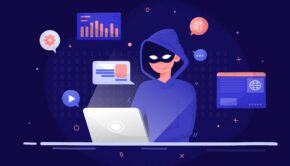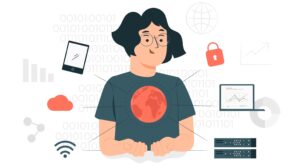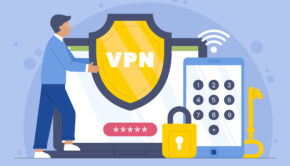7 Steps You Should Take To Stay Safe on the Internet
Phishing attacks, data breaches, cyber-attacks, viruses spread via email or website: the Internet houses many threats that many users aren’t even aware of; threats that, if not protected against, could cause thousands in damages or destroy devices!
How, then, do users protect themselves from these threats? Today, let’s go over a few ways, both on the hardware side and the software side, users can protect themselves against cyber-risks such as attacks and data breaches.
7 Ways to Stay Safe
1. A VPN
A surprising amount of cybercriminals look towards public networks as their key to stealing victims’ personal information. Why? Public networks often lack any meaningful security measures. Encryption, advantageous use of blacklisting and whitelisting, a network password: these are rarely present. Nothing is stopping a cybercriminal from using a public network as a personal hunting ground.
Users that frequently use public networks should consider using a VPN for privacy. VPNs encrypt data and mask the user’s IP address, making it difficult—if not outright impossible—for a cybercriminal to steal their data.
2. Password Generators (And Lockers)
An online account is a hub of personal information, and a password is the gate code required to enter. Why, then, do so many people forgo their security and set weak passwords for all of their accounts?
There is a myriad of reasons why, from inconvenience to laziness. That’s why password lockers and password generators were created.
Password lockers store a user’s passwords via a centralized locker, hidden behind a master password. Password generators, well, generate strong passwords that users can use for their accounts.
Lockers and generators go hand-in-hand, and many password lockers come with their password generators.
3. Two-Factor Authentication Programs
However, passwords are not enough anymore. These days, an intelligent cybercriminal can crack passwords in no time at all, especially since many people reuse passwords or stick to short, simple ones. This is why it’s worth setting up two-factor authentication programs for your accounts.
Two-factor authentication requires a user to submit a code received via email or text after entering their password. This extra step ensures that cybercriminals won’t be able to break into an account, even with the right password.
4. Intrusion Detection Devices
Preparing for a future cyber-attack means being proactive—installing security software and setting up security hardware. Along with being proactive, users need to be quick in reacting to a cyber-attack. Intrusion detection systems (IDS) make this easy.
Intrusion detection systems alert you when malicious activity is spotted on the device or the network it’s set to monitor. This ensures that you’re able to react promptly to the threat, lessening the damage done by the virus or criminal.
IDSs can be expensive, and setting one up at home could take some time, but they are worth it.
5. Software Updates
Software developers spend hundreds to thousands of hours perfecting their pieces of software. But no matter how much time a developer spends adding new code, removing buggy, useless code, or consulting with security experts, it will release bugs in need of patching. It just so happens that some bugs put the user at risk of cybercriminals.
Always download the newest software update. Your OS, software programs on your computer, even games: you must update your software.
6. External Backups
Cyber-attacks not only risk leaking your personal information to the rest of the world, but they can also result in a destroyed device and lost data. Take the infamous computer virus ILOVEYOU, for instance—a virus so potent, it caused $10 billion in damages. It accomplished this by spreading itself through email via a .txt file. Once opened, the virus would overwrite all files on the system until the device was unbootable.
The point is, computer viruses and cyber-attacks are unpredictable when it comes to damage. As a result, you should always prepare for the worst and backup your data on an external drive or even in the cloud. This way, you won’t need to worry about losing your data.
From a cheap external hard drive to a locally-stored NAS, the only limit in place for creating an external backup is your wallet.
7. Privacy Browsers
Browsers like Google Chrome, Firefox, and Safari offer plenty of features and promise quality browsing. It’s no wonder these browsers have taken center stage, pushing browsers like Edge to the wayside. Despite the quality of these browsers, however, they’re not as safe as you’d like to think.
From Google’s past privacy-oriented controversies to Firefox’s occasional security bug, it’s tough finding a browser that can be considered “secure.” Well, at least when discussing mainstream browsers.
Fortunately, there are plenty of secure browsers available; you need to look in the right places. The Tor browser, while slow, offers anonymity and even its search engine. Other browsers—like Brave, Chromium, and Iridium—promise extra security to their users. These may lack a few quality-of-life features found on other browsers, but that’s the price you pay for extra security.
Conclusion
The Internet is home to a plethora of threats to one’s security and privacy. Going on the Internet with a clear mind requires the use of external software and hardware. Fortunately, the solutions listed here will make your online experience much more secure!
















